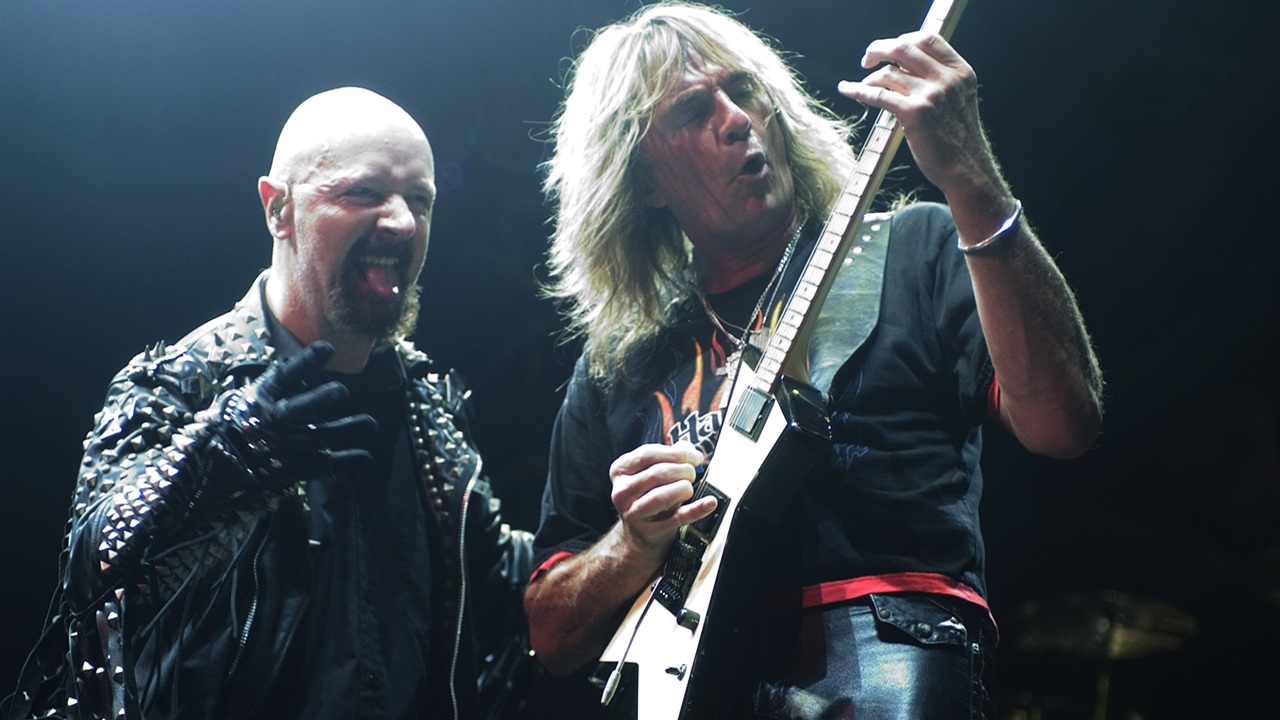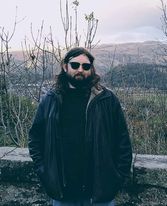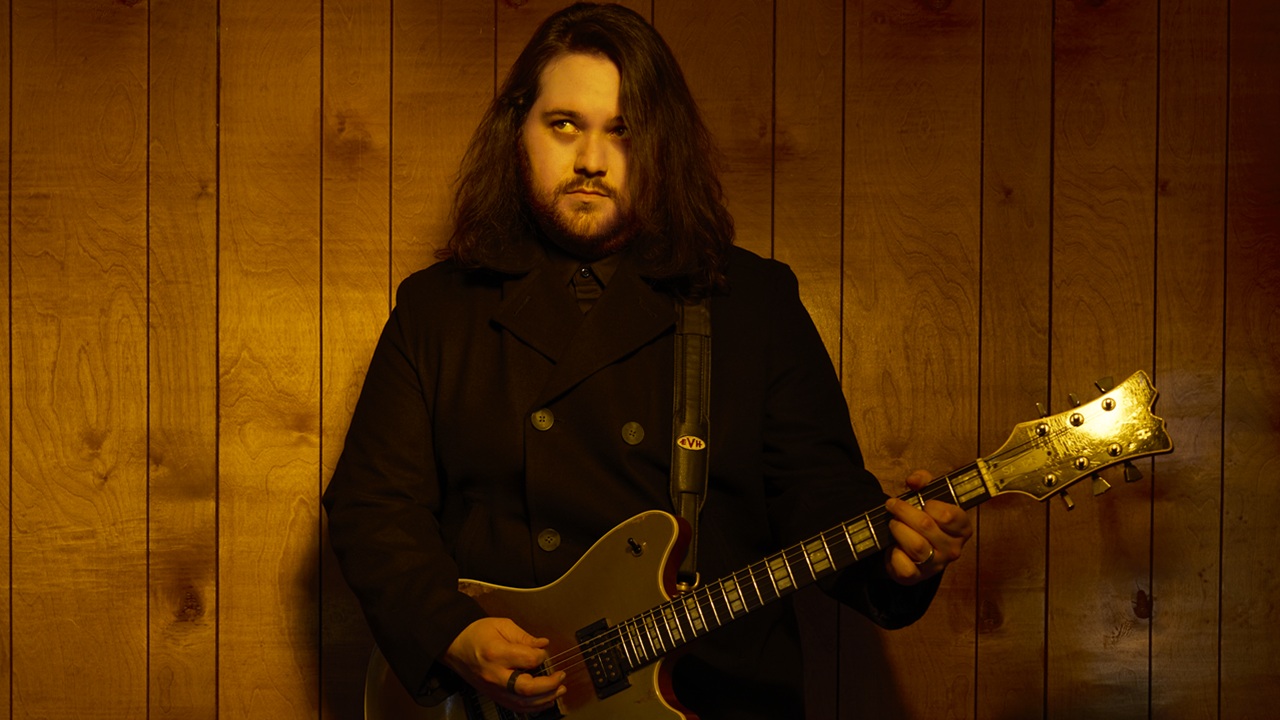"They said, ‘Can you get Rob off the bloody Teletubbies set, please?'" How Rob Halford's return to Judas Priest on Judas Rising rebuilt one of metal's greatest bands
After a decade with Tim 'Ripper' Owens, Judas Priest welcomed Rob Halford back into the fold - and ushered in their second coming

If the 90s was a decade of great change in metal, then the 2000s was the decade of the comeback. From Iron Maiden roaring back to power with Bruce Dickinson on Brave New World, to the likes of Slayer and Megadeth finding a triumphant second wind, heavy metal was rediscovering its roots after the wilderness years of grunge and nu metal, where even the standard-setting bands of the genre hit a rough patch.
“It was a weird time to be a metal band,” affirms Judas Priest bassist Ian Hill. “In the 80s, especially in America, you had all the Teslas and Skid Rows. All great bands, but it’d become fashionable and inevitably eventually it has to go out of fashion.”
Losing their iconic frontman, Rob Halford, probably didn’t help Priest’s prospects in the 90s either. Today, more than two decades on from his return to the fold, it’s hard to imagine Priest without the Metal God howling up front. But following the phenomenal success of 1990’s Painkiller – and its ensuing gruelling world tour – Rob shocked everyone by quitting the band with which he’d been shaping the metal world for 20 years.
“I didn’t quit!” Rob cries in mock indignation, recalling the turbulence of the early 90s with typical grace and good humour. “It was a case of LSD – Lead Singer’s Disease! I was in a great place and having a blast – Painkiller was one of the most successful tours we’d ever had. But we were all very knackered by the end of it and we agreed we’d take a break. So I said, ‘OK guys, I’m gonna go off and do a thing.’ I’d actually said it around [1986’s] Turbo and was told, ‘OK, so long as it doesn’t interfere with what Priest are doing.’”
But although Rob was keen to explore other avenues in a solo project, it wasn’t that simple. “The only way I could do that, at that time, was to send a ‘leaving member’ notice to the label,” he says. “It was just a clause in the contract basically. But everything blew up. ‘What do you mean you’re leaving?!’ ‘I’m not!’ It got so ridiculously out of control. I think it was a knock-on effect from how knackered we were. We probably should have just walked away and gone, ‘See you in a year.’”
Instead, Rob was out of the band and Priest forged on without him. Recruiting vocalist Tim ‘Ripper’ Owens, they continued exploring the harder edge of Painkiller via 1997’s Jugulator and 2001’s Demolition. Meanwhile, Rob had cycled through the thrash-flavoured Fight and electronica-enhanced alt metal of 2wo before settling back on his staple sound with Halford. But something was missing.
It was greatest hits box set Metalogy that rebuilt the bridges between Rob and Priest, reforging one of metal’s most iconic bands when long-time Judas Priest manager Jayne Andrews called a meeting between the parties.
Sign up below to get the latest from Metal Hammer, plus exclusive special offers, direct to your inbox!
“The day me, Ken [K.K. Downing, guitars], Glenn [Tipton, guitars] and Jayne met in my little kitchen in my house in Walsall, to discuss the Priest box set Metalogy, was where it all came together,” Rob recalls. “This was the first time the three of us, including management, were sat in a room. Great things happen in kitchens! We had a cup of tea and some Hobnobs and by the end of business, Jayne said, ‘The elephant in the room is this question: Are you guys gonna get back together again?’ And in very Bad News/ Spinal Tap fashion, we went, ‘Yeah, alright then.’”
Rob’s return was announced in July 2003. The band lined up festival appearances for the following summer, including a run of Ozzfest dates in the US with Ozzy Osbourne. Much of 2003 was spent rehearsing and preparing for the tour ahead.
“It was awkward… for about 10 seconds,” Ian recalls. “After that it was just like, ‘He’s come home!’ It was funny, because even Ripper thought it was a great idea, even if it put him out of a job.”
“We went down to Bray Studios, which used to be a big film studio where they made lots of the Hammer horrors,” Rob recalls. “When we went, they were making Teletubbies, so I went to see that set so often it became, ‘Can you get Rob off the bloody Teletubbies set, please?!’”
“Those rehearsals were just wonderful,” he continues. “I’m pretty sure that the first song we cranked out together, for the first time in over 15 years, was Living After Midnight. We just wanted a bang! It was glorious, hearing everything back in its place, everybody nodding to each other and smiling.”
That joy was carried forward when, on June 2, 2004, Judas Priest played their first show with Rob Halford in 13 years at the Stadionsporthalle in Hanover, Germany.
“Everybody rejoiced!” Ian says. “The Ripper albums got a lot of flak – people would say, ‘Well, that’s why they don’t play the enormodome anymore.’ But we all suffered a little bit [during the 90s]. When Rob came back, it was immense news. It lifted us back up to where we probably should have been within the genre.”
“Doing Ozzfest was magic for re-establishing the band in the US,” Rob adds. “What a phenomenal line-up too; Sabbath, Priest, Slayer, Slipknot…”
After the success of their tour, it was inevitable that Priest would get the itch to hit the studio and record together again. In winter 2004, the members of Judas Priest headed to the Old Smithy studio in Worcestershire to see if they could bottle lightning again. Discussions quickly circled the idea of picking up where they’d left off with Painkiller almost 15 years earlier.
“We couldn’t really continue with what we’d been doing with Ripper, we wanted it to feel like a fresh start,” Ian admits.
“I’m putting the cat among the pigeons here, but after Demolition and Jugulator everybody wanted Priest to get back on track,” Rob says. “There was tremendous comfort in being back with the guys, but we also knew there was a job to do.”
For all the strife Priest had endured in the 90s, Painkiller was an undeniable career highlight for the band. Acknowledging the ascent of thrash and extreme metal, Priest had managed to balance their traditional elements with a newfound heft that made the album feel fresh and vibrant.
“We’d been more experimental on Turbo and it’d lost us quite a few of our traditional fans,” Ian admits. “But with Ram It Down and Painkiller we decided to go for a harder edge, which all culminated with Painkiller in 1990.”
“Priest always had our ears to the ground, so to speak,” Rob says. “We set ourselves a task to create a ruthless banger from start to finish, which I think is what Painkiller became. We looked through our history and asked ourselves, ‘Have we still got it?’ The answer was, ‘Yes, and more!’” So now they were asking that same question again… and finding much the same answer."
“The joy and excitement [from the tour] carried over,” Rob continues. “In the ensuing weeks and months we had lots of writing sessions. I always love putting metal meat on the metal skeleton. The second I heard them playing, it was like the last 15 years hadn’t happened. It was my best mates again – no grudges, no complaints.”
One track in particular seemed to crystallise the enthusiasm and excitement bubbling around Judas Priest at that point. A hard-edged, dual guitar assault on the senses, Judas Rising was practically prophetic.
“I don’t know where that title came from – possibly just the psychosis of being metal phoenixes rising from the ashes,” Rob says. “It was the next dimension in Priest’s timeline. I love the way it kicks off – everything fades in, giving you this anticipation. That’s how I feel the fans must’ve felt, getting their favourite band back after forever. It was all a statement – the band’s back, he’s back… what else can you say? Judas is rising!”
“It put us back on track,” Ian agrees. “It actually took away some of the harder edge we’d got with Ripper, where we’d have ended up being Slayer if that’d have carried on.”
Released on February 23, 2005, Angel Of Retribution was the first Judas Priest album to feature Rob Halford in 15 years, and opening track Judas Rising proved the perfect reintroduction to the band that had helped shaped heavy metal. The record broke the Top 40 in the UK, and peaked at No.13 on the US Billboard 200, heralding the band’s glorious second coming that still continues today.
More than 20 years on, Priest are still releasing phenomenal albums – most recently 2024’s Invincible Shield - and are even lined up to play their biggest UK headline show to date in July at The O2 in London.
“I wonder what would’ve happened if Priest had stayed together?” Rob muses. “But it’s all just hypothesising. I hate regret. Besides, Angel Of Retribution still makes my blood boil and my toes curl.”
“We do it because we love it,” Ian says resolutely. “We ain’t stupid – we know we’re getting older and haven’t got a great deal of time left, but we’ll do it as long as we can.”
Judas Priest play Scarborough on July 23, and co-headline The O2 in London on July 25.
Staff writer for Metal Hammer, Rich has never met a feature he didn't fancy, which is just as well when it comes to covering everything rock, punk and metal for both print and online, be it legendary events like Rock In Rio or Clash Of The Titans or seeking out exciting new bands like Nine Treasures, Jinjer and Sleep Token.
You must confirm your public display name before commenting
Please logout and then login again, you will then be prompted to enter your display name.


